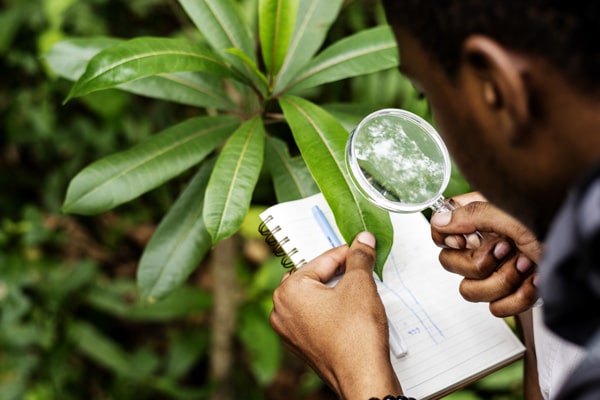Diseases that affect plants, including those that harm trees, can cause damage to the environment, forestry, and green spaces in urban areas. It is crucial to have effective strategies for managing these diseases, to maintain the health of trees and prevent the spread of illnesses.
A detailed plan for managing plant diseases focuses on identifying and treating tree diseases. It includes preventative measures, cultural practices, biological controls, and integrated pest management. The value of tree disease identification can't be questioned because it's the only way to provide targeted treatments and interventions.
Plant disease, caused by abiotic or biotic factors, refers to anything hindering a plant from reaching its full potential, leading to decreased economic or aesthetic value. Microorganisms and parasitic plants that cause diseases are referred to as biotic agents. In contrast, nonliving environmental and nutritional factors and chemical substances are known as abiotic agents.
Plants can become vulnerable to disease due to various factors, such as lack of proper nutrition or exposure to toxins. Additionally, plant pathogens, whether they are dormant or recently introduced, may be present in the surrounding area. If the environmental conditions are favorable, these pathogens may become active and cause disease in the plant. The following conditions must be present simultaneously for a plant to get unhealthy.
Contents []
Tree Disease Identification

Correctly identifying tree diseases is crucial for effective management. Understanding each condition's specific characteristics, symptoms, and underlying causes is essential. Diagnosing requires trained professionals who use visual inspections, laboratory tests, or digital tools to develop effective treatment plans. Examples of typical tree diseases, like Dutch elm disease or oak wilt, can be given as illustrations to emphasize the significance of early identification and customized management plans.
Proper identification is also crucial for implementing effective management strategies and targeted interventions. Each case requires specified tree disease treatment, and controlling pests requires customized measures. Gardeners and growers have a chance to take preventive measures, timely interventions, and informed decisions to safeguard their trees when they know what is the exact problem.
It also helps in the implementation of disease-resistant or pest-tolerant tree varieties, promotes sustainable practices, and reduces the use of harmful chemicals. Additionally, it is a way to enhance the understanding of ecological dynamics and support research efforts to develop better mitigation strategies. Determining tree threats accurately is crucial for efficient tree care, preservation, and sustainable practices in agriculture and gardening.
It is crucial to understand how pests and diseases affect trees and the defense mechanisms trees use to resist them. It involves in-depth knowledge of their behavior, such as their capacity to propagate and survive and how they harm trees. By delving into tree genetics and physiology, we can pinpoint characteristics that differentiate healthy, resilient trees from those prone to pest and disease infestations.
Understanding how pests, diseases, and trees interact in changing climates is also critical. This understanding can guide growers in developing effective tree-planting strategies and promoting management practices that help to resist these challenges.
Preventive Measures and Cultural Practices

To discourage pests in your ecosystem, consider implementing these basic management practices. Firstly, choose plants that are resistant to common diseases in your area. Additionally, plant sacrificial trees such as the golden delicious apple tree. This species is known to attract more codling moths than other types of trees. One more option for tree disease control is planting a few of these trees.
Removing all the apples during the stage when the moth burrows into the fruit is recommended to prevent further infection in other trees. The growers can also create refuge areas for natural enemies, like native strawberries.
It's crucial to manage nutrition carefully, as healthy trees are more resistant to pests. However, avoid adding excessive amounts of nitrogen, as this can result in soft new growth that pests are attracted to. Pruning is an effective way to promote tree health and reduce hiding spots for insects.
Integrated Pest Management (IPM)

Integrated Pest Management (IPM) is a cost-effective, eco-friendly approach to maintaining plant health. It involves using various preventive measures, cultural controls, and direct control measures to keep tree pests and diseases problems under control. Each component of the IPM program plays a vital role in promoting plant health, and when used together, they effectively keep pest problems below a tolerable threshold.
Establishing and maintaining a healthy forest requires proper forest management, the critical first step. It involves planting suitable tree species for the site, managing competing vegetation, maintaining adequate stocking, minimizing injury and stress, and following sound silvicultural methods. By taking these steps, it is possible to prevent diseases and insect problems and reduce the impacts of stress agents. In urban forests, it's essential to provide proper tree care, including watering, fertilizing, pruning, mulching, and selecting suitable species. These measures will promote the growth of long-lived trees that offer numerous benefits.
Taking care of forests and trees involves monitoring their health. It's crucial to detect and address issues before they become widespread and difficult to manage. Foresters need effective control options in case of an outbreak or epidemic. To keep the forest healthy, it's crucial to be aware of surrounding trees, past issues, and changes in the forest community. It helps prevent severe damage caused by pests.
To effectively manage tree diseases, it's essential to take a proactive and holistic approach. It includes identifying diseases accurately, implementing preventive measures, using cultural practices, utilizing biological controls, and administering targeted treatments. By doing so, we can protect our trees, preserve our ecosystems, and maintain the beauty and health of our green spaces. Collaboration, education, and ongoing research will help us enhance our understanding of tree diseases and develop sustainable strategies to ensure the longevity and resilience of our precious trees.



